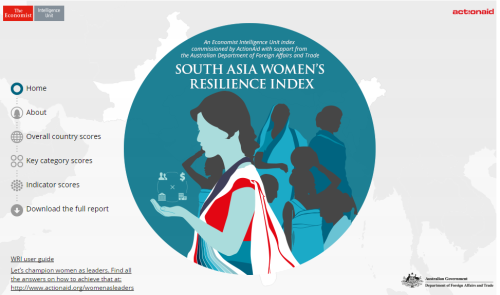#southasia
Mumbai. Indie 2005. Niewiele zapisków z tych dni. Przyleciałem przez Moskwę 30 grudnia 2004 roku i zamieszkałem w dzielnicy Bandra u Kamili i Rafała, który tam wtedy mieszkali. Trochę mi się ciężko to ogląda i pisze bo Rafał już nie żyje, a pewnie bym tam nie poleciał gdyby nie oni. W każdym razie był to dobry czas eksploracji niesamowitych miejsc w tym przerażającym mieście molochu.
Wrzucam 10tkę z niewielu zdjęć jakie tam zrobiłem, mam wrażenie, że sporo zdjęć wyrzuciłem już podczas podróży. Wtedy wyjechałem na ponad rok z PL - to miał być wyjazd dookoła świata z planem pracowania w Nowej Zelandii albo w Australii, ewentualnie w USA. Plany się pokrzyżowały w Kambodży, kiedy zostałem okradziony z paszportu i części sprzętu. Musiałem wtedy wrócić na jeden miesiąc do Polski.
Jak pewnie wcześniej wspominałem, używałem wtedy nikona d70 z kitowym szkłem - chyba lepszych aparatów wtedy nie było, albo inaczej nie miałem takiego hajsu, aby inwestować w mega drogie aparaty i obiektywy - wszystko poszło w ten bardzo długi trip. I teraz pomimo, że zdjęcia mają tylko 6mpx ale wciąż nadają się do druku (opublikowałem zdjęcie z Wietnamu i bardzo dobrze na rozkładówce w @vogue.polska to wyglądało).
Teraz z moją wiedzą i możliwościami, jakie daje sieć, ze sprzętem jaki można mieć, aby kręcić w drodze - pewnie moja podróż wyglądałaby inaczej. Z drugiej strony robiąc za “program podróżniczy” będąc w drodze traci się kawałek siebie, traci się ten moment, kiedy jest się w drodze samemu, ma się czas na myślenie. No i ten brak kontaktu natychmiastowego był bezcenny. Nie było smartfonów - internet był kafejkach no i czasem przez wifi. Nie chciałbym wyjść na dziada który pierdoli, że “przed wojną było lepiej” albo “za moich czasów”, ale to jednak jest coś co już nie wróci.
#mumbai #india #roadtrip #asia #southasia #bombay
Last Photo - Rafał Sagan 1979-2018. RIP (w: Mumbai, Maharashtra)
https://www.instagram.com/p/CJ3S52wn9pe/?igshid=1ccpginudat0q
Post link

Galle or Dutch Fort, a UNESCO World Heritage Site is located in the bay of Galle, southwest coast of Sri Lanka. It’s a historic beautiful cobbled-stone place filled with Portuguese and Dutch era buildings, quaint shops, cafes, and restaurants. It’s a MUST when travelling in Sri Lanka
I stayed in Mirissa which was only an hour local bus ride to Galle. I was blown away with the scene. I wasn’t expecting a European atmosphere. It’s very different from all the places I visited in Sri Lanka. I spent the whole day exploring and relaxing on the beach by the lighthouse. The shops have unique souvenirs and home wares that you can only find in Galle Fort, make sure to check them out too.
You can also check my post about awesome things to do in Ella.
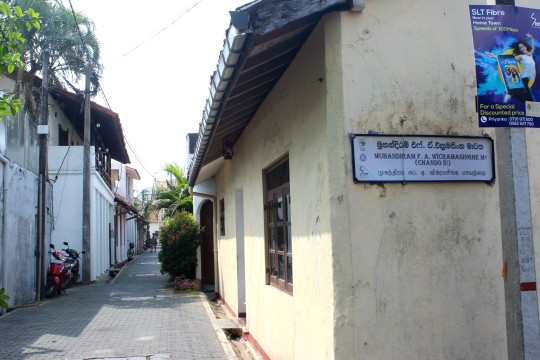





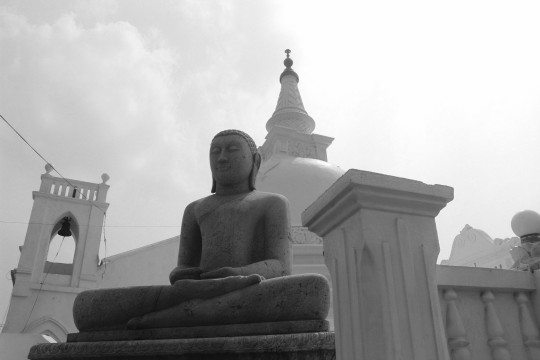



I had an amazing time backpacking in India for a month, but I knew I needed some time to relax before going back to Australia. Sri Lanka is like a breath of fresh air! I didn’t have any big plans and I only have two weeks left. I spent most of my time in Mirissa, a beach town located in the south coast; beach and lazy days every day!
I stayed for two days in Kandy then took a train ride to Ella. Ella is a natural beauty small town with stunning views, hikes and weather! Here are the things that you can do.
Take a train ride from Kandy to Ella (or Ella to Kandy)
One of the top things to do in Sri Lanka is to experience the scenic train ride from Kandy to Ella known as one of the most beautiful in the world. It’s a 7 hour train ride with endless views of tea plantations, waterfalls, villages, mountains, and a quick glimpse of the local life.

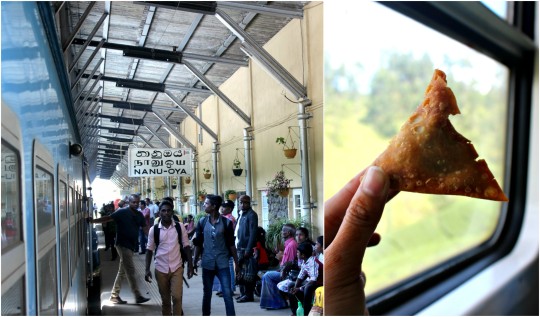
Sunrise hike at Little Adam’s Peak
It only takes an hour from Ella town. We made it just before the sunrise and the view was breathtaking!


Nine Arch Bridge
Another a must thing to do in Ella is to check out the famous Nine Arch bridge. We were lucky to be in time to see the train crossing.


Visit a tea factory
Sir Thomas Lipton bought his first tea plantation in Sri Lanka and now known as the Lipton tea. Sri Lanka is one the top tea producer in the world. It’s interesting to see the whole process. We also got the chance to meet the hard working and very friendly women picking tea leaves.


Swim at the Secret Waterfalls
A nice little gate away just outside the town.

Eat local dishes
Colourful and delicious vegetable curries.

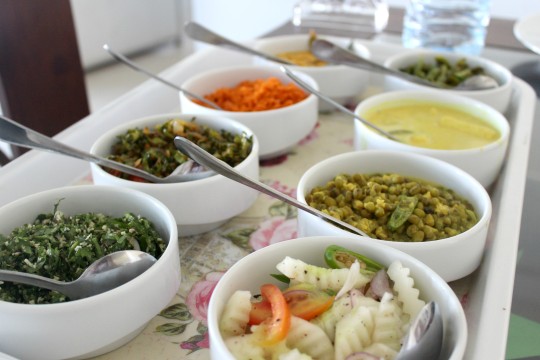
Sri Lankan breakfast consists of coconut rotti, dahl curry and coconut sambal.

By Sonia Taneja

You know when you go to your doctor’s office and tell her about your cough and she tells you what you can do about it? Everything in that visit – from the lung exam to the prescription she gives you and even the conversation she has with you – is taught in medical school. I will save you lots of tuition money and one year of rotating between classrooms and hospital rooms to let you in on a little secret about what it takes to be a good doctor. It isn’t knowledge of every disease and it isn’t even an understanding of how drugs work. It’s mastery of a simple, dying art – the art of listening well.
To be honest, I initially thought being trained on ‘how to listen’ in medical school was futile. To be even more honest, I thought it was ridiculous. We listen and respond all the time – to our teachers, our parents, our friends. I believed that as long as we communicated with our patients using some degree of emotional quotient, we really couldn’t mess this up. It’s not brain surgery or anything, or at least not yet.
And could listening even be taught? Working with clients at Sakhi for South Asian Women taught me that, apparently, it can and somewhere along the way, I may have learned.
There is a rather significant component of listening that I never used to follow before medical school and before Sakhi – the not talking part. I would respond to the problems that friends would bring up with me by offering them prescriptions and solutions almost immediately. This did several things, none of which were assuaging their anxieties: I would cut them off from the opportunity to give me more of themselves, effectively telling them that I understood them, their concern, and their perfect solution completely. At best, this type of interaction can cause people to feel that sharing additional information might be unwelcome, making further conversation unlikely. At worst, it makes them feel unheard and abruptly judged. And when the topic is difficult for people to put into words, like with medical issues or experiences of domestic violence, their induced silence becomes far more dangerous.
Friends weren’t usually looking for to-do lists from conversations like this. They wanted to know that their problems were valid and that I would be there for them, no matter what. Similarly, a patient recently diagnosed with diabetes isn’t only looking for insulin. They want to know that their fears about living with a chronic disease are common and that their symptoms are real, but that they will be able to manage their new lifestyle with professional support. The best way to treat peers and patients is to treat them well – to ask, to listen, to understand, and then to hand them tools so that they can carve their own path to recovery.
When I spoke to my first client at Sakhi, all I wanted to do was to prescribe. Within the first few minutes, I wanted to tell her to run, to leave her house immediately – what else would you want for someone who describes her own home as unsafe, threatening to her life? Bound by my year of clinical training, however, I only said that I thought she was strong and that I was happy she came to Sakhi. “Tell me more,” I added. As she left our meeting, she expressed that she had never talked about everything that had happened to her out loud before, “It felt nice.” There was much more power in my open silence than in my prescription.
Doctors see their patients at their most vulnerable: sick, weak, often unclothed. But Sakhi for South Asian Women does the same – clients may not be exposed physically, but to share the intimate, traumatic details of their lives that are often considered by our own communities as unspeakable personal issues or ghar ka mamla is naked enough.
This stigma concerning domestic violence that is prevalent within South Asian community is impregnated with fear – the fear of being burdened with uncomfortable information and unsolicited responsibility. What will people say about her? About me? Log kya kahenge? Why should I get involved? And as a result, the people who could mean a safe location to stay or a phone number to call don’t. A community of potential listeners is lost.
That’s the sad thing about our world. Society makes us think that those who are struggling are weak.
But the clients at Sakhi have taught me that those who struggle are strong enough to do so without breaking. And the only thing strong people need to turn their strength into action – action to win custody of their children, to work within a complicated legal system to convict their partner of violence, to find a job that will support their new family and themselves – is to be heard, to be seen, and to know that they are not alone. To my beloved South Asian community, let’s listen.
Sonia Taneja is a student at the Yale School of Medicine interested in working at the intersection of social justice, public health promotion, and medicine, towards a goal of health equity for historically disenfranchised groups. She has worked as a Parker Huang Fellow in India studying the mental health of female sex workers and women coerced into prostitution and also has an MSC in Public Health from the London School of Hygiene & Tropical Medicine where she studied race as a barrier towards cervical cancer screenings in the U.S. Outside of work, Sonia is an avid comedy clubber, Bollywood watcher, and bhangra dancer. She is a summer 2016 intern with Sakhi for South Asian Women.
By Vrinda Trivedi
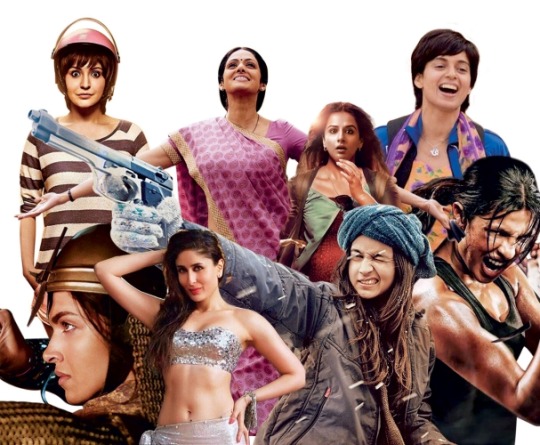
Growing up, I was totally enamored by the sheer beauty and elegance with which Bollywood actresses carried themselves on screen. One of my earliest memories is listening to the song Rangeela(1995) and seeing a cowboy boot-clad Urmila Matondkar shimmy around in the middle of the street to the peppy beat. Over a decade later, I still love the music and cinematography that Bollywood churns out at an unbelievable rate.
However, over the years, as I’ve allowed the term “feminist” to envelope me and my worldview, Bollywood has started to become a personally contentious issue. And I know i’m not the only person out there either, that rolled my eyes after watching Ranbir Kapoor character Bunny “suddenly” fall in love with Deepika Padukone’s Naina after she became conventionally hotter (got rid of her glasses, wore tighter clothes, etc.) in Yeh Jawani Hai Dewaani (2013). And honestly, despite that and many other equally regressive scenes (i.e. when Aditya Roy Kapur’s character insults a woman who calls him out for ogling her), I still watched the movie multiple times, my guilt growing each time. So for a while, I indulged myself in this cycle of watching a problematic film, enjoying the music and visuals, feeling guilty and repeat. With each new movie was a tried-and-true formula of portraying the 20-something actress as little more than a damsel in distress. Female character development is typically limited to one or two vapid scenes of the heroine declaring her decision to marry the boy, against her family’s wishes. Or at least, such was the status quo for the last few decades. However, increasingly, lesser-known Bollywood filmmakers have begun creating more progressive films, such as Queen (2014) and Titli(2015).
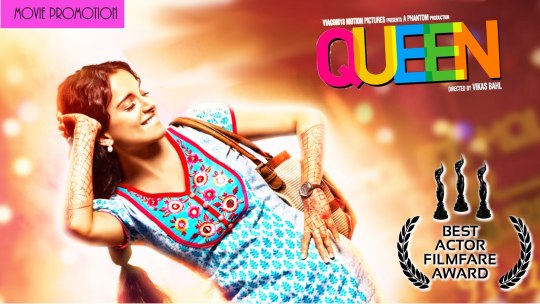
When Queen was first released in 2014, it was received with across-the-board applause, and quickly became the token feminist film for Bollywood viewers and producers. Critics and the public alike enjoyed the film and its refreshing take on independence and womanhood. The movie chronicles the symbolic and physical journey of a young Punjabi woman, Rani Mehra, as she is left by her fiancee, her life seemingly ruined. She then chooses to go on her honeymoon across Europe by herself, which results in a steady rise in confidence and radical self love, albeit with some significant bumps in the road.
What pleased me most about Queen was Rani’s slow realization that radical self love was not only important, but actually necessary. Beyond physical and economic independence from previous sources of stability and dependence, she was able to come to terms with her own need for support and approval and embrace her freedom. This theme of self-acceptance was overtly demonstrated in a variety of impactful scenes. Rather, the character’s intentionality in stepping out of her comfort zone, and a heartbreakingly relatable and accessible dialogues were able to display her level of growth throughout the film.
In the past, Bollywood films have never made it a point to emphasize the character growth of female characters, much less actually write a script that involves any internal growth at all. Bollywood has made a few rare attempts at pseudo-feminism, which typically is carried out in an incredibly dramatic scene where the heroine slaps a thug who may have insulted her. Or more typically, she will shout out her macho love interest’s name, who comes to the rescue by thrashing the ruffian, thus protecting the heroine’s honor. The damsel in distress archetype is one that has undoubtedly permeated mainstream Bollywood for generations upon generations, with the exception of a small group of older and recent notable outliers such as Khoon Bhari Maang(1988),Mardaani(2014),Kahaani (2012; which draws on interesting concepts of the Goddess, motherhood, and power), and Fire(1996; although Fire is not mainstream Bollywood).
However, having a strong female lead is not enough to categorize a film as feminist, and this is where Queen is able to excel. Rani never relies on her macho friends to beat up harassers, or delivers an isolated monologue on the ills of society. Instead, by the end of the film, she loudly and unapologetically loves who she is, which I feel is one of the most radical and powerful feminist statements that a young, woman of color woman can make.
Vrinda Trivedi is a junior Women’s, Gender, and Sexuality Studies, and Political Science double major at the College of Wooster. Born in South Africa to an Indian immigrant family, and raised in Cleveland, she enjoys exploring intersections of identity. Her academic interests address these intersections, as she is in the midst of writing a thesis entitled, “Okay Ladies Now Let’s Get in Formation: A Comparative Analysis of the Development of Grassroots Women’s Movements Post-Civil Conflict.”
Sun: A Short Film by Harminder Phull
A mother and her teenage son struggle to live with an alcoholic and abusive father and husband. After years of feeling helpless with no safe place to go, they make a difficult decision to try and salvage what’s left of their family but they may already be too late.
Thoughts from the Filmmaker
Sun is about the things we hide, consciously or unconsciously, from our friends, from our families from ourselves. The percentage of women exposed to some form of abuse (mental, verbal, physical - many various forms) compared to how little it’s discussed clearly demonstrates that this is a very hidden and avoided topic. We wanted to bring light to the ugliness that gets covered up, especially in an era of social media obsessed relationships that focus more on putting on a good face in public instead of addressing their problems. This problem is even worse in South Asian communities where there is a palpable and real push AGAINST ever talking about domestic abuse, coupled with a lot of victim blaming. So ultimately, that’s what Sun really is about, the secrets we all keep from each other. Whether it be a mental health issue, addiction or spousal abuse, there’s a culture of keeping quiet amongst South Asians about these issues and a reluctance to get help. It’s only when these secrets come to light does anything change in the story and it’s the same for reality, we have to shed light on domestic violence, addiction, mental health to move forward and to hopefully heal.
I think first and foremost we want people to acknowledge the problem exists and acknowledge that we aren’t talking about it. Why is that? We’ve shown the film at 8 festivals and everywhere we go people come up and say they either know someone who experienced something like this or have experienced it themselves. Yet if you ask what conversations they’ve had, many would say that the post-film discussion was their first! There are many causes, contributing factors and unique circumstances that bring about these situations. Alcohol is a major factor but the relationship is not one to one. We chose to bring light to both issues in our film, but we hope that the discussion rises above just alcoholism and abuse. Many of us have had the experience of where an relative drinks a little too much and it’s often passed off simply as “Oh, he just likes to drink.” Or we’ve seen someone grab their spouse a little harder than usual, give them a little shove, maybe raise their voice at them whenever we see them and we often think nothing of it. Simply a small argument between a husband and wife that doesn’t warrant any attention. Sometimes the smallest of gestures have the largest of stories. Sharing these stories with each other is what we’re trying to encourage through this fictional film we’ve created. Knowing that you’re not alone in suffering from domestic violence or addiction can be a powerful realization that might just push someone to admit they have a problem and get the help that they desperately need. Our hope is that this film would touch someone in this situation and maybe, just maybe, make them realize that the only way to move forward and heal is to bring these things to light for themselves and more importantly for others. Every survivor of abuse or addiction that comes forward to tell their story only helps others in the same situation realize it’s okay to get help, to talk, to find their own happiness and to take back their lives. We hope our film gives them and the support structures around them the courage to stand up and talk about it - it won’t solve everything, but it’s a start.
Harminder Phull has spent the last five years honing his skills as a screenwriter. His directorial debut was in 2013 with his film Baggage, the story of a lonely South Asian truck driver who makes a difficult and dangerous decision to smuggle drugs and send money back home. Baggage went on to premiere at the Punjabi International Film Festival 2013 and played in festivals in both New York and San Francisco. SUN is Harminder’s second film as both writer and director, and went on to play at 8 film festivals across North America winning two awards. You can find him on Twitter @harminderphull
By Sonia Mittal

As many excited feminists know, there are a growing number of initiatives taking place to raise awareness about sexual assault on college campuses in the United States. One of the most influential has been the “Carry the Weight” initiative started by Emma Sulkowicz at Columbia University. After being raped by a classmate who the school cleared of the crime, she vowed to carry a mattress with her as long as she and the accused student attended the same school in order to represent the weight she has to carry around with her every day since this traumatic experience. This even resulted in her receiving a standing ovation as she carried the mattress across stage on her graduation day in order to show the lack of action taken by the administration at larger universities. This movement is one of many that has gathered force in the recent years in order to spur more conversations about sexual assault especially within younger generations.
Another important instance is the “Enough is Enough” legislation in which all colleges in New York State are required to adopt a uniform definition of affirmative consent, must ensure an amnesty policy in which students coming forth with incidents of sexual assault are immune to campus violations surrounding drug and alcohol use, and have to create a unit within the State Police that is trained to respond to crimes of sexual assault.
While I personally have never experienced sexual assault, I have been heavily involved in encouraging conversations surrounding this topic in order to remove the stigma behind this type of violence on my college campus. Yet, after various workshops and trainings I have realized how even though there are now numerous stories in the media and people coming forth talking about their personal experiences and ways to survive from such a trauma, there is more work that needs to be done to make sure that the voices of South Asians all around the nation are heard. That is not to say that South Asian names are not extremely apparent in the media today. From Mindy KalingandJhumpa LahiritoPriyanka ChopraandKiran Gandhi, Indian women have been making headlines for their amazing job using different platforms to tackle important women’s rights issues. Yet, while there is a significant amount of progressive work being done in organizations like Sakhi and on college campuses, there is more to be done to make conversations surrounding healthy relationships and sexuality more normalized within South Asian communities.
Through watching Bollywood movies, talking to friends, and reflecting on my own relationship with my parents and extended family, I have come to the conclusion that there are certain widespread cultural ideals that often silence issues of sexuality and gender within the South Asian community. Discussing these topics is essential in raising awareness about sexual assault and domestic violence from a very young age. I have been lucky enough to grow up in a household where my parents have been very open about having conversations involving sex and relationships. My mom has discussed how a partner should be treating me, has made sure that I am respected in every relationship that I am part of including that between family members and friends, and has warned me of the signs that indicate unsafe situations. My relationship with my mom has influenced the way I interact with men on a day to day basis. I pay attention to the words other people use when talking to me, and if I start to feel hurt or misspoken to in anyway, whether the impact of the comment was intentional or unintentional, I separate myself from the situation immediately. I am also aware of physical connection and know how to say stop if I feel that I am being touched in a way that makes me feel uncomfortable. I feel more safe and secure knowing that I can discuss incidents like these with my parents and that I am not alone.
However, even just glancing at the relationships I know many of my South Asian friends have with their parents or even looking at my own relationship with my grandparents, there are so many differences that can certainly lead to a misunderstanding or lack of information about relationships, communication, and sexuality. Without an understanding of what constitutes a good or bad relationship, how one should be treated by others, and even how to stop certain uncomfortable situations from happening, students are going to feel less inclined to speak up and offer support to others who are brought up in a closed, more secretive household.
In order to be agents of change in gender justice movements and push back against environments that claim that women can not be sexual, it is important that women in the South Asian community speak out as much as possible. Whether this means volunteering for an organization like Sakhi or working at colleges to remove the cultural taboo around topics like relationships, sexual assault, or sexuality, it is important to create and foster spaces where young women can participate. Students should start to teach both elders and younger people the importance of having a relationship where topics like sex and gender can be discussed, whether this means discussing this with parents or serving as a role model for siblings. While change is often difficult and we know it’s culturally important to respect our elders, it is vital that women within the South Asian community assert themselves and create and nurture environments where our voices are heard.
Sonia Mittal is a sophomore at Brown University studying Economics and Psychology. She grew up in New York City and has always been extremely passionate about issues surrounding women’s rights. She has done a lot of work in infertility clinics and looking at women’s reproductive rights both in the United States and in India. In college, she is heavily involved in the South Asian Students Association, is on the executive board of Women in Business, and works with various organizations to bring awareness to others about sexual assault on college campuses.
By Meera Seshadri

It’s a new house. I walk through its shadows. Moonlight falls on a picture, and shimmers over a brass lamp, calling me near. The tile is cool beneath my feat. I love dark wood. Teakwood, rosewood. There’s an old grace, tinged with melancholy, that lies just beneath its proud gleam. Wood that carries itself like a Great Grandmother. Family heirlooms watch me knowingly, stranger and friend. High ceilings … and lofty, long-forgotten dreams. Memories I want to push away. And then the tears come.
My house in Bangalore is an old house. I went there for a weekend, not long ago. A bungalow with peeling paint, erratic electricity, and a gray gloom that settles into everything. It has been so, so long since the noise of happiness filled the rooms and floated out onto the verandah. I try my best to bring the house back to life. I fluff the cushions and put them on the swing every morning, only to realize the covers are torn beyond repair. I open the curtains all the way, urging sunlight to warm the walls … but the trees are dense and overgrown, resentful of my eagerness. Heavy padlocks protect rooms and cupboards that haven’t seen the light of day for years. That Sunday morning, I sat out on the swing with a cup of green tea. The lady who sells the flowers walked by the gate, colorful blossoms perched in a straw basket on her head. She eyed me strangely. “Indira? Indira?” she asked. I let her in, and bought two marams of jasmine. I told her I was Indira’s granddaughter, only here for the weekend. With a faraway look in her eye, she reminded me of when the house was filled with women, and my grandmother bought jasmine, marigolds, and “even 10-12 roses”. I remembered.
It used to be so different. Bougainvillea trees and jasmine creepers on the wrought-iron gates, always in bloom. Children playing in the monsoon – hide and seek, dodgeball, lock and key. Grandmothers standing by their gates, calling out pleasantries into the evening. My grandfather in his regal armchair, kettle-cooked chips on the table and a weepy Rajesh Khanna film playing in the background. My hands tracing the zig zags of granite countertops, stealing pakodas and handfuls of murukku from the kitchen. Women hurrying in and out of rooms, armoire doors banging, tea cups clinking, sneaky laughter and morsels of gossip exchanged like hot sweets. A house, all abuzz. My house.
But the best time is afternoon. After lunch. When the women make a big show of clearing away the pots and pans, wiping the table clean, and gathering in the living room under a furiously turning fan. Some women have pillows under their heads, hands clasped over their hearts. Others lie on the carpet and read ‘Anandha Vigadan’, a Tamil magazine devoted to celebrity gossip, articles on “home and hearth”, and general advice to keep yourself fair and lovely all year long. “Put neem on your face,” reads my grandmother. She frowns slightly. “No no … papaya … that is the best fruit for skin,” she decides. I shake my head and sigh happily. Their bellies are full and so are their minds, eyes staring up at a ceiling fan that seems to turn their thoughts and worries around and around and around. Then someone cracks a joke. Another remembers a story. And the room erupts into laughter for a few minutes before we hear a disapproving groan from my grandfather’s room. Shushed smiles. I know he loves the banter … straining his ears to hear our whispers. The quiet takes our minds back to the ceiling fan and the worries, but the laughter makes everything easier.
That Sunday afternoon, I lay on the carpet and stared up at the ceiling fan. But it was just me, turning
around
and around
and around.
~~~~~~~~~~~~~~~~~~~~~~~~~~~~~~~~~~~~~~~~~~~~~~~~~~~~~~~~~~~
Meera Seshadri is a public health professional working at the intersection of sexual health promotion and sexual violence prevention. Although a Bay Area native (and fierce West Coast loyalist!), she has lived and worked extensively across the United States from Atlanta to Washington DC, and abroad in Japan, Nicaragua, the Philippines, and India. She holds a Masters of Science in Public Health (MSPH) in Health Communication and Adolescent Health and Development from Johns Hopkins University, and a Bachelor of Arts in Global Public Health and Dance. Meera is a lover of all things fantastical and unconventional, inspired by the romance of travel, food, dance, and the sea. Follow her on Twitter @MeeraSeshadri
By Arpita Appannagari (Health Initiative Coordinator) and Caritas Doha (Economic Empowerment Coordinator), staff at Sakhi for South Asian Women
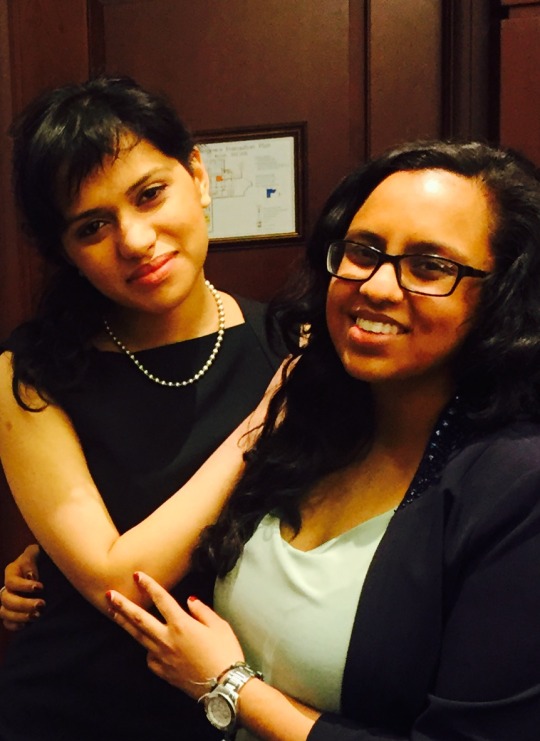
Trigger warning: depression, anxiety, self-harm, suicidal ideation, hospitalization, abuse
This is an interview about depression. Why are we the ones writing it?
Caritas & Arpita: We both have depression and feel comfortable sharing our stories. That we feel comfortable does not mean we feel our experiences are typical, instructive, or solely representative. We are not attempting to speak for other South Asian people who have depression. We do feel that our personal histories are worth sharing, if only to contribute to an ongoing conversation, one that has existed before us. Others will hopefully give feedback, relate to, and/or challenge us; the idea is to have a robust discussion. Our experience is our resource right now.
Arpita:I’m also the Health Initiative Coordinator and my position, which existed at Sakhi a decade ago, is a direct response to a gap in services related to mental health. Sakhi staff found that when clients were unable to finish certain programs, such as ESL or computer literacy classes, 90% cited reasons related to mental health, including not being able to get out of bed or feeling too sad to come to the office.
Caritas: You and I have had many discussions about mental health as it relates to us and our work. We’ve built a foundation together for this conversation, where there is established trust and history. Ultimately, we are friends who have spent a lot of time interrogating our relationship to depression and anxiety. Now, we are essentially transcribing one of those conversations, sparked most recently by my stint in a psychiatric ward earlier this summer. We’re sharing it through Sakhi’s channels to bring visibility to an issue that affects our community.
Why is Sakhi having a conversation about mental health?
Caritas: Sakhi has been having this conversation for a while and finding ways to intentionally incorporate mental health and holistic care into our services. We’re responding to what we’re seeing, which is that women are having experiences that we recognize as being related to their mental health, and unless addressing it is made a priority, women’s empowerment suffers.
Arpita: It’s important and it’s ignored. When women come here and don’t feel comfortable talking about their mental health, it’s because they’ve been conditioned to hold it in. This isn’t singularly a consequence of being a survivor of violence; the women that come to Sakhi hold a number of identities that ask them to be strong.
Caritas:Even saying the word depression is fraught. There’s a lot of work to be done in terms of getting people to accept that depression exists beyond a moment of feeling extreme and justifiable sadness. It has both mental and physical manifestations, but when clients say they’re depressed, for them it lacks chronic meaning.
We both hid our depression from our parents. Why?
Caritas:Just because you have depression doesn’t mean you understand depression. You and I were both going through a period when we were trying to cope, manage, and understand this illness but we were also acutely aware that this was not something that was readily discussed or acknowledged in our culture or in our families.
Arpita: I felt a responsibility to hide it. My parents came here to make my life and my brother’s life great, and the thought that I was doing something to cause my own depression was really hard to shake. I didn’t want to give my parents the impression that they came here and struggled and did so much for me but I was ruining it by not living to the potential that they deserve. I honestly still feel that way sometimes.
Caritas: If I had broken my leg, my parents would be supportive because there’s evidence there. There’s a physical mark and no one at fault. But without that physical evidence, for myself and for my family, I held the blame. The whacked perspective of someone with depression made me feel ashamed and undeserving, so of course I hid it. And I hid it primarily with good reason. But, there were also instances where I hid it without good reason. My ability to assess whether someone could help and support me, to have faith that someone would step up, was distorted. I don’t think the answer to this question is just that we’re South Asian, a part of the answer is we hid depression from our parents…because we were depressed.
Arpita:Yes! I hid it for a number of reasons that I cannot explain to a person without depression. But for me, I knew my parents would support me 100%. Even in my worst depression-brain, I knew that if I told them, they would drop everything to be with me. Knowing that was somehow such a strong motivation to not tell them. The idea of burdening my parents with something that I didn’t even know how to explain or justify was so atrocious to me that I couldn’t even form the words to tell them. Everyone who knows me knows how much my parents love me, I talk about it constantly and they demonstrate it every single day. It doesn’t feel better now that I’ve told them, I still feel like such a heavy burden on their shoulders.
You also didn’t tell your parents that you were in a psychiatric ward earlier this summer.
Caritas: I didn’t tell many people. I only told those who knew enough of my mental health history and that I interacted with every day. Partially, just because of logistics – I couldn’t call many people. But mostly, I wasn’t in a place where I wanted to be managing other people’s feelings.
Arpita:That’s why you told me not to visit you!
Caritas: Yes, because it was a really intense place where I was also in a low point, as my friend and as a person who also struggles with depression and as one of the most empathetic people I know it just didn’t seem like a place that was healthy for you. It wouldn’t have been helpful to either of us.
I understood that the way to be there for you was to not physically be there for you. That became unbearable once I realized you were there by force.
Caritas: I didn’t realize that if I had checked myself in voluntarily that they could keep me there longer than I wanted. As long as I displayed a basic level of mental faculty, I thought I would be able to leave when I was ready. So for me, from the outset, I had in my mind that I would need 48-72 hours to fully cope with what I was feeling.
What were you feeling?
Caritas:Suicidal. Suicidal with a plan. I checked myself in not because of any understanding that suicide was an irrational thing to want, but because I felt dangerous to myself in a way that could permanently affect my health. I felt like I needed to be in a place where I was being monitored.
What was your reaction to being held there involuntarily?
Caritas:It was devastating. I think there was a feeling of “what have I done?”. Up until that point I had made all the decisions that had landed me there and then, unexpectedly, I was a human without agency for an undetermined amount of time. At that moment, that was the hardest thing – not knowing how long I would have to be there. Nobody gave me those answers. Once I realized I was going to be there for more than 72 hours I felt a sense of purpose, “Now I have to prove I’m healthy, I can play this game”. I decided that going to all offered therapy sessions, being “functional”, showing up for every meal (even if I wasn’t eating it) was how I could get out of there. If I hadn’t had an outside support system that rallied immediately, a job that was so receptive, and an ability to take care of myself then I would’ve been there for much longer. I realized that there is a lot of love out there for me, which was helpful in a way but I also felt guilty. If I could play the game and be functional in there, why couldn’t I do it outside of the hospital walls? Was it just a huge attention-seeking thing?
Did being South Asian impact your decision to go or your mindset while you were there?
Caritas:Yes. It affected that I went there in the first place because it was a way to protect and take care of myself without having my family see. I don’t think it affected my mindset while I was there except that I was so grateful I could speak English fluently. I had a hard enough time communicating to case workers what my needs were and felt grateful that I could advocate for myself. I checked myself in so that my family wouldn’t have to see the actual hard, visual ways in which depression affects me. But honestly, I also did it partially because I wanted them to know that this is a serious illness. This isn’t just me being sad, something to be fixed by taking a walk or bottling it away. A part of me hoped needing something as serious as hospitalization would make them understand the gravity of what I was experiencing.
Did you gain anything from being there?
Caritas: The psychiatric ward was an option to me because it was an option in popular culture; I didn’t know what other resources existed. Checking yourself into the ER for psychiatric reasons is a good, brave, responsible thing to do if you feel that you need it. But, it is also scary and dehumanizing, it isn’t restorative – it is a place to be safe for an amount of time. There is no magic that happened to me in the psych ward. I have always known that I have a support system I can call on, but it’s very hard to ask for help when you feel like you don’t deserve it and it’s demoralizing –
Arpita:– it’s hard to always be the one asking for support when ideally you would be asking for and giving support to those who love you in equal parts. This feeling is heightened when you feel like you don’t deserve help, and it’s impossible to see what people gain from always lifting me up and making me feel worthy.
Caritas & Arpita: In our conversations about depression and culture and community, we’ve realized that we’ve been taught that this is a thing you don’t talk about, this is something to be ashamed of, if people you love know, it will hurt and baffle them.
What are we talking about when we say “support”?
Caritas: Therapy! Going to therapy is my most effective form of care. It’s a way for me to talk through all the moving parts of trauma history and depression without feeling like I’m burdening someone.
Arpita: I hate going to therapy. It helps me and it’s good for me and I’ve been going on-and-off for four years with only good results, but I just can’t stand it. I get very uncomfortable talking about myself and I need and have had great therapists who are comfortable with silence, but I take some sort of perverse pride in relying on myself.
Caritas: Oh, that’s so South Asian.
Arpita:Yes! Yes, it is. I want to prove to my parents that I’m worth how hard they worked to raise me and help me be successful. I want to be stronger than I am, and going to therapy feels like weakness whereas “taking care of it on my own” feels like strength.
Caritas: I’ve had some really great therapists and I’ve had some horrendous therapists, but I’ve always felt like therapy is a long-term support that I will need. If I don’t go to therapy something builds up and explodes – no matter who I talk to , who I reach out to – taking time regularly to talk out loud does good things for my brain. There’s a part of me that feels like “Oh, what an American thing to do”, but over the years I’ve realized that there’s been an interesting correlation between not going to therapy and increase in my self harm. I think there’s something powerful that happens when you hear yourself talk through issues out loud to someone who is a professional listener. It certainly helped me. I’ve seen it help Sakhi clients too when they come in for counseling – they might not call it therapy but the process is the same. I think there’s an idea that taking space and time for yourself is an unjustifiably selfish thing to do. I don’t think it is if it’s what’s helping you heal.
Arpita:There’s no part of that that I disagree with. My dislike of therapy doesn’t negate how helpful it is for me, for people like me. I don’t do depression recovery perfectly. There are days where I don’t seek the help I know I need, and my recovery has been start-and-stop because my brain is constantly negotiating feeling better with the idea that I’m making this all up. I’ve also been blessed from the beginning with an unbelievably generous group of friends whose collective voice drowned out my internal feelings of inadequacy and worthlessness. That group includes friends, extremely important people in my life, who have been there to see and manage me at my worst and those who don’t know this part of me at all. It’s that kind of support that I crave, because it’s that kind of support that I’ve been given from the start. I moved to New York and away from almost all of those people, and therapy is a good placeholder for them…but it’s not always what I want to do.
Caritas:For me, support from loved ones has been equal parts necessary and alienating.
At Sakhi we talk a lot about self-care. What is that?
Caritas:Prioritizing our own health, which is something that we’re not necessarily taught to do. Self care is radical because we don’t come from a culture of self-help books – “self-” as a prefix is not a thing, we come from a culture where what we do is meant to serve or enhance a larger unit.
Arpita:I completely agree that it’s radical. For me, self-care is the simple process of taking time to yourself, for yourself. That seems so selfish. My model of strength is my family; my brother, especially, is the strongest person I know. They have shown that there is strength in taking care of other people. It’s hard for my me to see strength in taking care of myself – my depression-brain is saying, “Why bother?”
Caritas:As radical as the concept is sometimes, the process of self-care can be very mundane too. It takes a lot of planning and reinforcing routines. Setting alarms to make sure I eat, taking my medicine at the same time every day, cleaning my room even when I don’t feel like it because I know it’ll make me feel better later, going to therapy every week – depression is dramatic and puts you in touch with morbidity and mortality, but it is also super boring.
Arpita: They never show that part in TV shows and movies, but it honestly takes up the most time during my day and my overall recovery! I am a process-oriented person and I can be very analytical, so my day starts with me taking stock of my emotions, like a checklist. If there isn’t balance in that checklist, my mind moves on to setting in place all the things I can do to restore balance.
Does visibility matter?
Caritas:Yes! Depression is a very isolating and perspective-shifting thing that happens to your brain, so it’s important to de-stigmatize it, partially by sharing experiences, so that more people can identify what they are going through and seek help. I grew up thinking the pain I felt and the frequent crying were normal, I just thought that’s how people were supposed to feel. We need to normalize depression but also realize that you don’t have to live like that, there are ways to feel better, you deserve to feel better.
Arpita:The idea of visibility was the initial spark as I began building programs for the Women’s Health Initiative. Creating a Mental Health Assessment form and asking clients, very soon after they come through Sakhi’s doors, to take time and discuss their mental health was my way of making mental health more visible to clients, more central in their lives. Women often come to Sakhi with urgent needs, for housing, public assistance, jobs, their mental state and emotional health are set aside. This is why visibility matters organizationally – Sakhi provides holistic services, and addressing mental health is a crucial part of that.
Caritas: Having seen popular depictions of depression and anxiety, people working through their experience on the Internet in so many forms, through comics,blogs, videos, has helped me understand depression better. It’s easier to recognize those parts of myself when I see someone else representing it. I think it’s helped me process some really frustrating aspects of my mental health. It’s helped me be patient with myself in figuring out what recovery looks like, what progress looks like, and what I can expect from myself. It’s hard to have that perspective if you’re in a silo.
Arpita:Visibility of depression and anxiety has also helped me be more patient with others, with the people in my life who are witnessing my recovery and my setbacks. I had to learn to let my friends and my family understand depression and anxiety in their own way and in their own time. Initially, I was so impatient; I wanted people to learn and understand right away so that I didn’t have to explain my behavior all the time, so that I could have a panic attack and not explain what a panic attack is.
Caritas:For me, I hid so much from my family because I thought they couldn’t handle it. Because mental health issues aren’t talked about there was such a barrier to me realizing that my family, specifically my parents, could have empathy. It took a lot of mistakes on my part in communication before I realized that they are capable of, or at least want to, understand what’s going on with me. The progress isn’t linear; sometimes, they’ll still be frustrated and not understand or tell me something like, “Pray more.” But, there are also many instances where they’ve surprised me by having compassion in the way that they know how. Just general visibility is good, but culturally-specific visibility is also important. There are particular issues and interactions that arise when you’re South Asian that aren’t necessarily depicted in popular media. We’re navigating it in our own way, having difficult moments and conversations. There’s no perfect way to do it.
Arpita: Yes! There’s popular visibility, there’s cultural visibility, but there’s also the sentiment of “Yeah, me too.” That sentiment is part of why you and I are writing this together. Our experiences are very different but sometimes startlingly, reassuringly similar. Seeing that in you, understanding that part of you has been a critical aspect of my own recovery. I don’t have to explain certain nuances of depression, I feel a sense of kinship and affirmation that what I’m experiencing is real. That version of visibility is healing. It’s so special when someone says, “Yeah, me too.”
This is the beginning of what we hope will be an ongoing conversation. Feel free to share your thoughts, responses, and stories in the comments below.
If you or someone you know is seeking temporary, non hospital-based emotional health services, contact your borough’s Crisis Respite Center. If you or someone you know is distressed or in crisis, please call Lifenet. If you’re a teen looking for resources about mental health and wellness, visit the NYC Department of Health and Mental Hygiene’s Resources for Teenspage.


